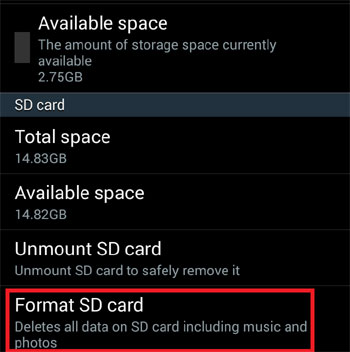
Wait a few minutes for the process to terminate then begin using the card. Finally, in the pop-up message, select Format SD Card. On your phone, navigate to Settings > Device Care.

Below, we show you an example of how to format an SD card in Samsung on Android OS version 10. But the main idea is to navigate to the Storage area in your phone Settings, tap on the SD card, and look for the Format option. Format SD Card on Android Phoneĭifferent Android versions have slightly different steps on how you go about formatting. As already mentioned most devices with SD cards including phones, computers, and cameras have a formatting option. There are several ways to format a memory stick. In such a situation, you would have to format the SD card to exFAT.

For large files over 4GB, you can't use the FAT32 file system which has a maximum file size of 4GB.

If you don't know where the memory stick has been and you're not sure what kind of files could be there, or you suspect it could be infected by a virus, the easiest thing to do is to format it.ĥ. If that's the case and the memory stick's performance can improve, then formatting becomes an option.Ĥ. You may experience performance degradation. In such a scenario, you would need to reformat to FAT32.ģ. Some older Android phones don't have support for the exFAT file system. SD card is damaged or simply isn't working and you have some kind of error message on your phone e.g. Before you begin, you may want to back up your SD card (memory stick) if it contains files you don't want to lose.īefore we begin, let us examine some common situations where you need to format a memory stick on an Android phone.ġ. What Are the Common Situations of Formatting an SD Card?įormatting in computing refers to the deletion of all data in a storage medium and setting up a file system.

What Are the Common Situations of Formatting an SD Card?.


 0 kommentar(er)
0 kommentar(er)
